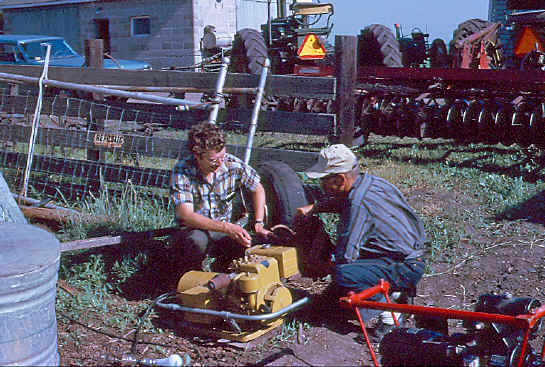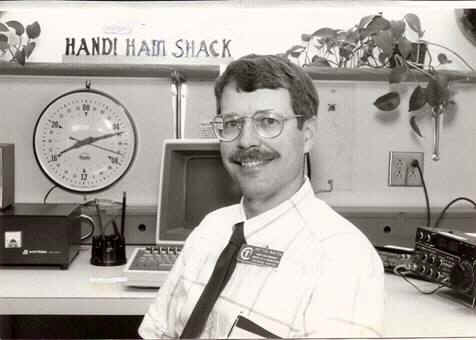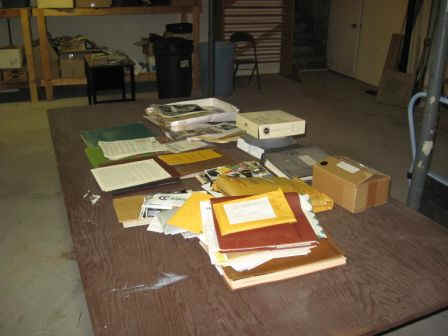Welcome to Handiham World!

Image: Pat, WA0TDA, (L) and Newt Owens, owner of the farm, gas up the generator in this old Field Day photo from the 1970's.
Summer is officially here, and summer heat and humidity have arrived here in the United States Upper Midwest. I call this particular season "the ham radio doldrums" because it seems as if activity on the HF bands gives way to thunderstorm static and the repeaters fall silent as people head outdoors or go on vacation. Sure enough, several recent nets that I often check into have gone without net control stations, and I only found out after the fact because I didn't show up for those nets, either. My bad!
Fortunately, Amateur Radio Field Day arrives at just the right time to revive ham radio for the summer! It's more than just a "day", too - most clubs and individuals plan for months ahead of actual Field Day weekend, and Field Day itself spans the weekend of June 27-28 this year. It is always held on the fourth full weekend in June. Since Field Day is an exercise in emergency operation, it is often held in, well, a real field! Outdoors. Without access to the power grid. Or permanent shelter. It may rain or be sunny & hot. There might be bugs. Or bears. You just never know, and that's part of the adventure.
The idea, of course, is to practice setting up and operating "off the grid", which is potentially valuable experience for doing the very same thing in an emergency. The thing about Field Day is that it typically combines this serious purpose with lots of ham radio fun, including on the air competition for points, camaraderie, family picnics, camping out, and just plain enjoying the summer. It's really my favorite ham radio event each year, and I plan to spend some time with the Stillwater Amateur Radio Association (SARA) Field Day crew this coming weekend.
When I think about all the years I have enjoyed Field Days past, I can recall times I have operated as part of a club event and times I have operated solo. There were other times that I operated with a small group of my ham radio friends. One of my favorite early memories is of operating with the Mankato, Minnesota Amateur Radio Club on the lawn of the local vo-tech school. We had tents set up, and it was fun to operate and learn new skills by getting on the air with my friends. Once I operated Field Day from a barn, sharing the microphone and code key with my friend Don Newcomb, W0DN, who is now a silent key. Don and I would later hatch the plans for a new antenna company, Butternut Electronics. You never know what might come out of your Field Day experience!
Some groups like to operate competitively, with the goal of earning that coveted high score. Points are given for each contact, and there are extra points for certain types of operation. For example, phone contacts count one point each, while CW or digital contacts count two points each. Multipliers for low power operation or operating "off the grid" help build up that score.
But fierce competition has never been my Field Day cup of tea, and I tend to gravitate toward groups that place a higher priority on just having fun. One time I decided to join a Field Day group operating nearby, and was disappointed when it turned out to be a CW-only operation with only the most experienced ops allowed to take a place at the operating position. I didn't stay long there, because it wasn't my idea of fun to watch someone else log points. The lesson I took away from that year's Field Day was that I needed to do a bit of homework ahead of time to be sure I was with a group that didn't take earning points so seriously. Not, mind you, that there is anything wrong with being competitive. It's fine for those who enjoy that sort of thing, so I guess my point is that Field Day comes in many flavors, and it's up to you to shop around for one that you like.
You can start on the ARRL website, since ARRL, among its many other great activities, sponsors Field Day. There is a graphic "Field Day Locator" map that allows you to put in your own address and then marks out nearby Field Day sites:



